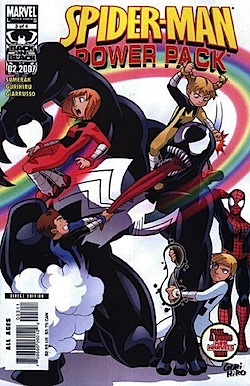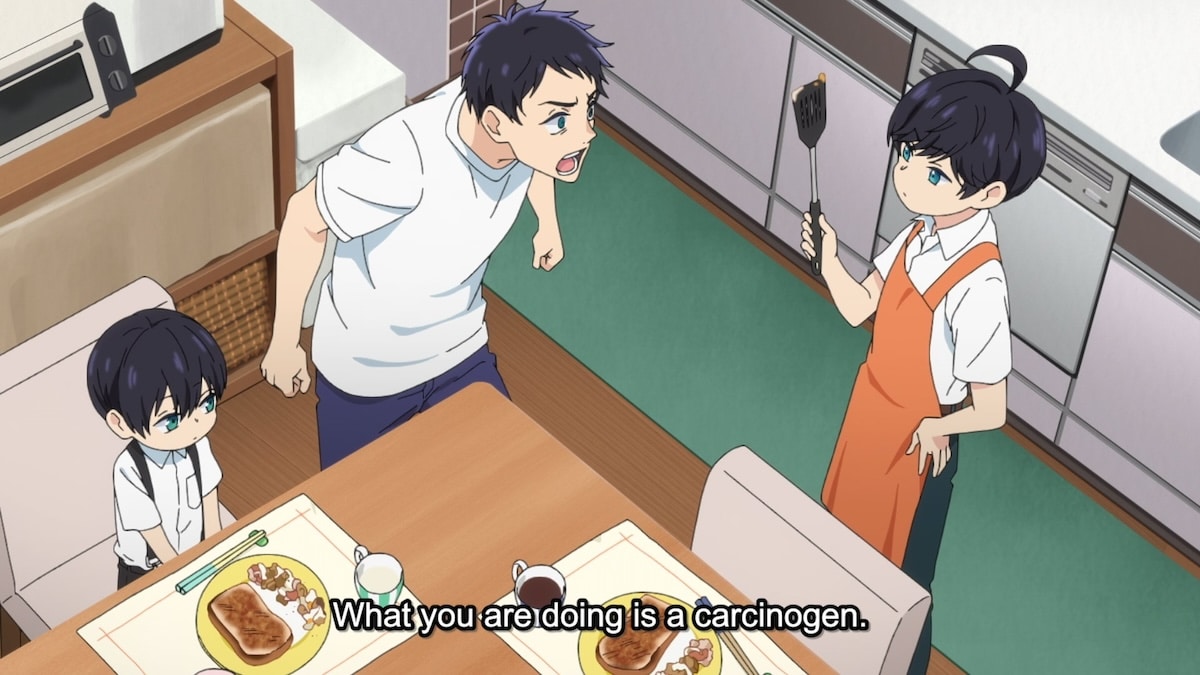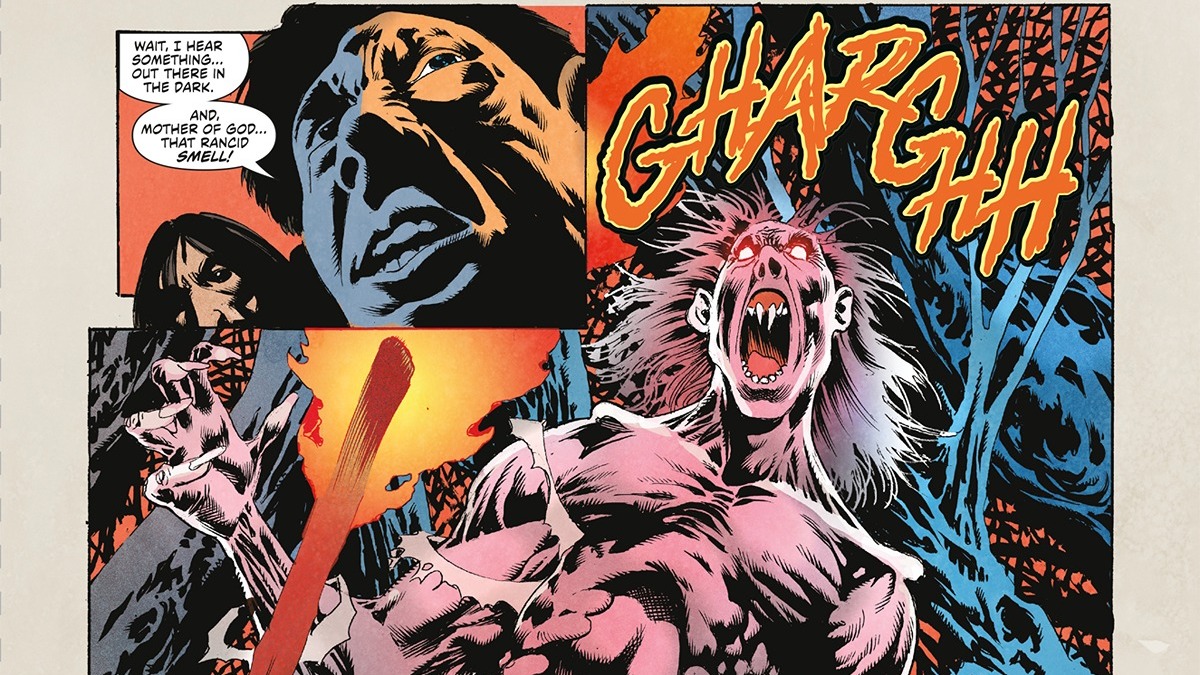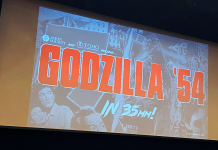A lot of big comics announcements this week in advance of Comic-Con showbiz onslaught, and some of them have interesting reverberations. By far the biggest is Amazon’s entrance into the comics fold with Jet City Comics. As one of the “Big Five” utilities of the internet age (the others being Apple, Google, Facebook and Microsoft) it’s a pretty huge move. And of course, since Amazon has all the money in the world, if you were spitballing what their entrance into the comics world might be, you’d think Chris Ware illustrating Alan Moore, Steranko doing Batman fanfic. Something BIG! But no, it’s a fairly modest and VERY market research driven list of SF and fantasy adaptations by well-established genre authors. One of them is a reprint of a smeggin’ Devil’s Due book, fer cryin’ out loud. It’s a program that someone with a loan from the credit union could have launched. The head scratching among the comicsigentsia could be heard from Toronto to Portland.
But, if you had access to endless book sales data—something Amazon probably has sitting around—you would probably note that these kind of genre adaptations sell and sell well when lots of more ambitious comics programs full of artful, innovative thought-provoking fare have spun their wheels. And you know, one of the reasons Amazon has lot of money is that…they like to make money.
Robot 6’s Corey Blake laid out the puzzlement:
The website states that Jet City Comics is “the home for uncommon graphic novels and comics,” but Tuesday’s press release, reveals that Jet City’s mission is more narrow than that. According to Amazon Publishing Vice President Jeff Belle, “Our focus will be on adapting great books for this medium”. There’s also a mention of “new ideas” in the same sentence but it seems to be within the context of adapting pre-existing books or playing within the realities first created in books. While it’s fun to see books come to life as comics (I loved The Hedge Knight comic), this was somewhat of a disappointment. The level of imagination and creativity coming from comics today is just mind-boggling; there’s a healthy stream of insane ideas, rich world-building, fantastic characters and engrossing narratives — all of them original and formed whole cloth from the minds of comic creators. Comics are more than up to the task of providing original material. I’m sure the reasoning for this choice is that Jet City wants to have recognizable brands to get people’s attention, to pull from pre-established readers and audiences. That’s understandable. But not a single original comic in the initial line-up? Does Belle’s statement that the focus will be on adapting books mean that’s all Jet City will do? I sincerely hope not.
Rob Salkowitz has a must-read analysis of how the move fits into Amazon’s aggressive market control and many other elements:
Will Amazon use its control of the pipes to advantage its own publications over competitors? If past behavior is any indication, the short-term answer is no. Amazon’s market edge comes as much from its comprehensive scale and selection as from its convenience and ubiquity. Most comics publishers have other options for reaching customers, particularly on the digital side, and the brick-and-mortar direct market is still critical to the periodical comics business. As long as Amazon has more to lose by pissing off the bigger publishers than it has to gain by promoting its own wares, it is likely to remain relatively neutral on the distribution side. But don’t be surprised if you start getting some interesting and coincidentally self-serving recommendations from Amazon once they know you are a regular customer for comics and graphic novels.
Salkowitz—who lives in Seattle where Amazon is based, so he probably has a good ear to the ground on this—also points out that with Marvel and DC increasingly closed shops, and even established authors having to take risks on essentially self-publishing and crowdfunding, the entrance of a player that pays livable rates (we hope!) is a good thing, even if there’s the risk of market destabilization at some point.
With its fanfiction Worlds program underway, and frequent mention of comics in their Kindle promos, Amazon clearly has been thinking about comics for a while. That they went with something stable and middlebrow instead of swinging for the fence is the mark of a company that is playing the long game. And, we hear there is more to come.
At PW, Calvin Reid went right to the throat and asked if retailers would carry Jet City Comics—traditional book publishers don’t always carry other Amazon-produced imprint. The answer was that while the guy at the Strand was kinda iffy on general principle, comics shops were more pragmatic:
PW asked several New York City comics retailers if they would carry print titles from Jet City Comics. While the three retailers PW asked said they would consider selling Jet City Comics titles if approached by Amazon, they were also wary. Mitch Cutler, owner of St. Marks Comics in downtown Manhattan, said, “We’ve made a living by selling everything published for 29 years and there’s no reason for us to change that policy, assuming Amazon deals fairly with us.” Jeff Ayers, manager of Forbidden Planet, said “we would carry their titles if offered,” but also cautioned that many of Jet City Comics initial titles—among them adaptations of prose works by George R.R. Martin and Hugh Howey—were the kind of comics that did not sell well at Forbidden Planet. “We’re great with science-fiction and fantasy but these kinds of adaptations have had disappointing sales here. We’d like to see Jet City release books by more established comics authors, like Dan Clowes for instance.”
Another story this week was Marvel’s new “Share Your Universe” program which will provide free stuff for you to foist on new recruits to the Marvel U. New young recruits, as the materials are aimed at the 6-10 audience. I wrote about the program for PW, and participated in the press call, which included publisher Dan Buckley, CCO Joe Quesada, television and animation VP Jeph Loeb, and animation development and production VP Cort Lane. Heavy hitters and people whose business acumen I respect a great deal. What was really interesting to me was how many times market research was mentioned: The White Tiger tested well; younger kids are confused by different art styles, and so on. I know Disney tests things out the wazoo, so you can only dream of the heaps of research in this particular episode of Corporate Hoarders. There was one little bit of info that Buckley mentioned that kind of blew my mind:
In addition to the joys of sharing the Marvel Universe with your friends, there was much reference on the call to market research, some of it surprising: one of the strongest places for kids to get their first exposure to Marvel’s characters was as a Halloween costume at a costume party, said Buckley.
All joking aside, the idea of free stuff to build new young readers is a good one for everyone involved; Marvel hasn’t really been in a position to do too much that’s kiddie friendly for a while, but kids like comics and kids like Marvel…don’t need no market research to know that much is true.
It also reminded me of some passages from another must read: Shannon O’Leary’s retailer survey, also from PW:
While the across the board success of Saga is a remarkable publishing success story in and of itself, what makes the series’ sales splash so notable is the possible sea change it indicates for the comics market as a whole. When asked what their customers were most excited about and what segments of the comics market appeared to be growing the fastest, most retailers pointed to Berkeley, Ca.-based independent comics publisher Image Comics, and so-called “Creator Owned” Comics[…] “Creator Owned books (is) how things are going,” says Forbidden Planet’s Jeff Ayers. “Superheroes have their place, but I think a lot of new readers aren’t going the superhero route. That’s been the case for years but this year more than ever.”
With kids who read comics reading Adventure Time and Avatar and Geronimo Stilton and other non-Marvel things, it’s not a bad idea to let the younger set know that there are Marvel Comics with the characters from the cartoons and movies. You could argue that the cartoons and movies are the end product, but it’s not the Disney way to leave a dime on the floor, even when you have a pocket full of quarters.








While Amazon sells everything to anyone, they struggle making decent profits and work on very tight margins, so I am not surprised they are going for modest, statistics driven comics.
Also, I hope great writers and artists will avoid to work with a company that undersell every book and comic they sell hoping the real world competition fails because it can’t have the same volumes.
Re: Superhero Costumes and kids:
Marvel did that back in 1982!
http://www.comics.org/issue/201466/
As for starting slow, this has been proven many times.
For example: DC Comics.
Vertigo launched with three established titles, then slowly offered miniseries and new series later. Since then? Minx, Matrix/Helix, Piranha, Paradox, Zuda…
Kodansha Comics started slow with two established franchises: Ghost in the Shell and Akira.
Also, be aware that Amazon offers a comics authoring service, the Kindle Comic Creator. That’s where you’ll find the crazy new ideas. It’s just a matter of time before the “Shades of Grey” model works for comics…
@giuliano
Obviously haven’t heard of Hugh Howey, author of Wool, who started with .99 cent e-book edition c/o Amazon.
He recently signed a print-only deal for around $500,000 with Simon & Schuster to distribute Wool to book retailers across the US and Canada.
A lot of people have no clue about the origins of Hugh Howey and how big his audience really is. When we were offered the job of the adaption of WOOL, we already were fans of the book, so it was a no brainer. The potential of getting these comics to a new audience is huge and in the long run, getting more people trying any kind of graphic storytelling is what everyone wants.
Good call on using Gurihiru’s Power Pack to illustrate your point. The Power Pack digests have helped me convert more kids into comics readers than anything else I’ve given out.
Really glad to see Marvel’s kid-focused initiative. Yes, the movies may be considered by many to be the end product they are also a fantastic front door for new generations of kids who are looking for the books after seeing the movie. Congrats Marvel, excellent move!
Amazon’s projects are always a bit suspicious. I’m sure it could wind up a fantastic opportunity for someone but probably not the creators. Look closely at the comics/gns listed as library bound by Turtle Back books and combine that with the used booksellers…in the end, it’s not a healthy opportunity for the creators. Turtle Back buys the paper backs at a bulk rate and then makes a killing on rebinding the books.
Here’s the thing, if you are about to sign the contract and that voice in your head says ‘RUN!” then dammit, run for the freakin’ hills.
I have a love hate thing with Amazon. I’ve been able to find books I’ve wanted at a dirt cheap price but now I view them with the same eye as I have with music file sharing sites: Amazon has no good intentions for anyone but Amazon. They are thee DARK SIDE
I thought initially from seeing headlines that Amazon had stepped up as a distributor of comics – now that would be a serious game changer! I’d imagine sales would probably skyrocket if the number of customers I have (in a book store) who tell me they don’t buy single issues because there are no comic shops in the whole region are anything to go by…
Amazon is the race to the bottom. E-book authors make an average of under $500/year. I imagine comics will be about the same. What Amazon is trying to do is squeeze all margins out of all commodities and digital distribution. Not just destroying profit, but the ability to survive. What Amazon is trying to do is remove all the friction in the creation and distribution process that people need to make enough money to survive.
I don’t know why they’re doing it. They’ll destroy themselves in the process. They’ve never really made any money, but that’s their whole point of existing.
The NYT just had an article about Amazon not taking deep losses on small-press books any longer, so maybe they’ve realized they can’t keep on with their plan. At some point, someone has to earn money to buy food, or the whole frictionless, efficient economy crashes.
It will be interesting to see what Marvel does to compete with the DC Kids titles, priced at $2.99. Boom! Studios, as KaBoom, appears to be in the forefront of marketing to young readers. I would hope that they opt for less page count with a $1.99 cover price with a story line that is distinctly related to the perspective of the younger audience. Got my fingers crossed on this project!
Comments are closed.